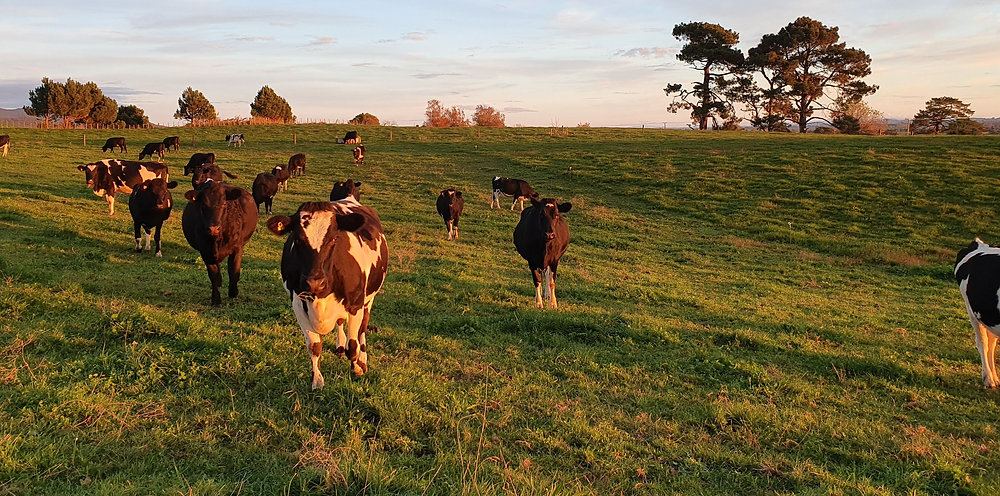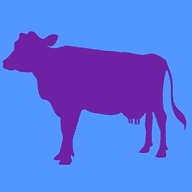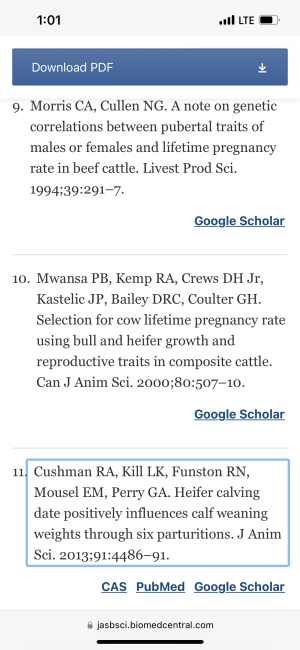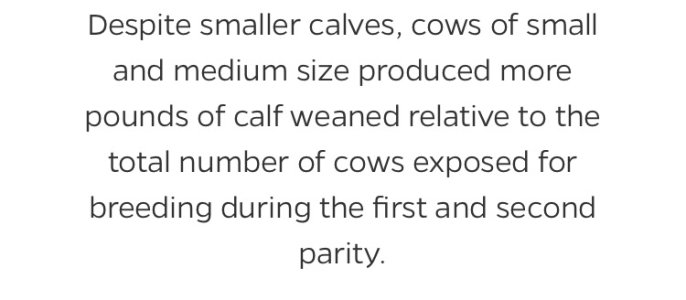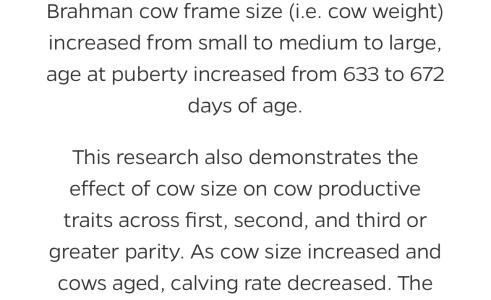Hmm looks like I am discussing it here .So even though you have same rate of infertility/non breeding in both herds years 3-5 . There is still a significant higher number of the TT herd in production.
So the TT genetics lead to an overall higher average of number of years in the herd/longevity.
And my quotes are directly from the conclusion. And it includes that information.
So the more TT fertile smaller heifers are more fertile because their own herd mates were starved. Btw this study was based on a single herd and was over 25 years in length.You left out that they lost that benefit as they aged.
I should not comment on this Plag thing. Never heard of it before. Not too interested.
Yes. If you have a growthy heifer and she is deprived of proper nutrition, she will not start cycling and will be hard to get bred. If you don't understand that concept, we are totally wasting our time discussing anything with you.
Hmm it would seem to me it would be financially beneficial to have TT cows crossed to a tt bull. You would get the benefit of the smaller higher fertility in your cows and get the added advantage of growth in your calves. Oh wait isn't that some weird thing called hybrid vigor.
And isn't this thread about something like is it financially beneficial to keep the larger cows or smaller cows?
Hmm maybe someone should start a thread about that and discuss those things!

